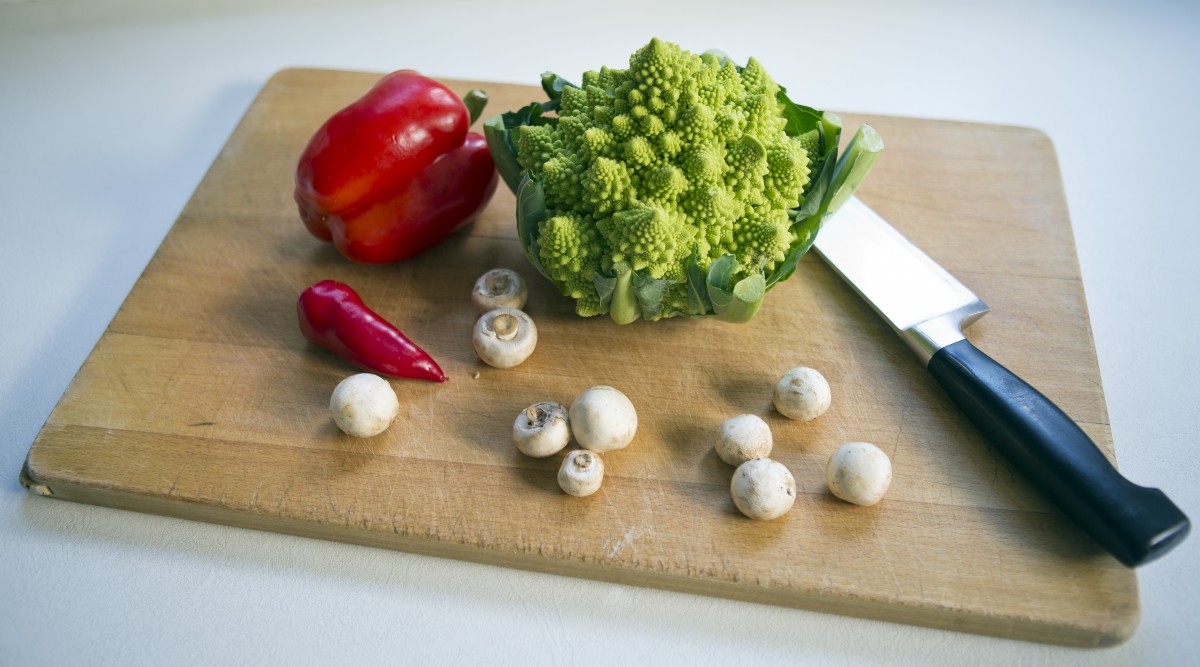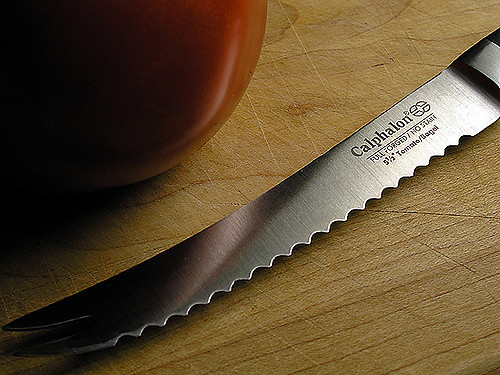Minimizing Your Kitchen: The Only Kitchen Knives You Need
When I got married almost 11 years ago, my mom gave me a knife block for our first Christmas together as newlyweds. It was a pretty decent little knife block and it has been well loved and used over the years. However, just like lost socks from the dryer, four of the six steak knives have disappeared into thin air and they decided to take their BFF the paring knife along with them :( And my go-to butcher knife is getting quite dull and not as trusty as she once was.
I’ve been in the market and doing some research to know what knives are worth putting my money towards. I’m also in the processes of minimizing the things in my home, so I need to know what is necessary and what isn’t.
Here are some tips from my friends at Real Simple as well as my sister, Melanie, who went to culinary arts school to get some tips and tricks from her and to confirm what I have already learned from said research.
CHEF’S KNIFE

You really don’t need to spend a fortune on an expensive blade. The most important thing about your all-purpose knife is that it feels comfortable in your hands and you keep it sharp. A great option is a medium- to light-weight version with a thin 8-inch blade. Use it for slicing, dicing, and all of your everyday prep.
PARING KNIFE
The paring knife is a perfect little multitasker to “pare” down bigger items and for all your detail work, such as: hulling strawberries, peeling cooked beets, trimming mushroom stems--as well as in-hand jobs like slicing bananas, scoring avocados, and segmenting citrus. It also works great for loosening cakes and testing them for doneness.
SERRATED KNIFE

This is a must-have for slicing through crusty bread, this knife has tiny teeth that handles tender items, like ripe tomatoes and fragile layer cakes, with care. Look for one with an offset blade, which makes it easy to cut loaves without dragging your knuckles across the cutting board.
HOW TO HOLD A KNIFE
For better balance and control, try this grip: Hold the knife’s handle with your dominant hand. Wrap your bottom three fingers around the handle and place your index finger and thumb on either side of the blade, just in front of the bolster (that’s the protective base of the blade). Hold firmly; but not too tight.
And since we’re already talking about knives, here are some tips about what certain words really mean when you come across them in recipes:
CHOPPED: Think ½ to 1 inch; anything bigger will likely by specified.
FINELY CHOPPED: As small as possible--⅛ inch or smaller--for herbs, or ginger.
SLICED: About ½ inch; thicker should be specified (ie: 1-inch wedges).
THINLY SLICED: As thin as possible--around ⅛-inch thick.
Do you have any other tips about buying knives—what is or is not necessary? I’d love to hear your thoughts in the comments below.
- www.commons.wikimedia.org
- www.pxhere.com
- www.realsimple.com
 Mary Richardson
Mary Richardson
Weekly Newsletter Contributor since 2014
Email the author! mary@dvo.com
